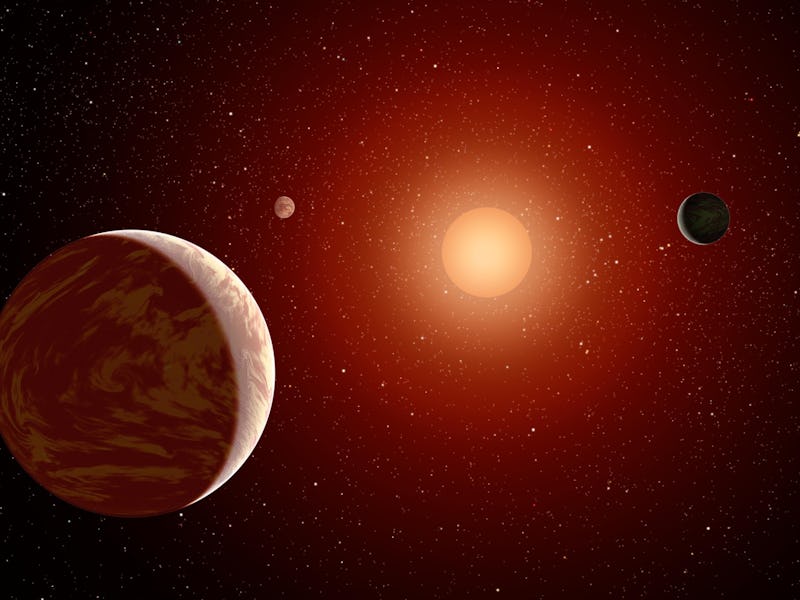Scientists Can’t Explain Mysterious Signals Coming From Deep Space
They plan to watch this curious red dwarf star again over the weekend.

Scientists at the 1000-foot wide Arecibo Observatory in Puerto Rico are baffled by the “peculiar” signals coming from the red dwarf star Ross 128 and its accompanying planets. In hopes of solving the mystery, the researchers announced this week that they plan to watch the rust-colored star on Sunday, July 16, which at less than 11 light-years away, is one of the closest stars to our solar system.
The researchers picked up the strange signals during a campaign to specifically observe the radio signals being emitted by red dwarf stars, whose profound longevity (1,000 times the longevity of the sun) might give primitive life a good shot at developing on one of the star’s nearby planets, should they orbit in the red dwarf’s habitable zone. This campaign, however, is not in an effort to listen for communication from intelligent alien species, but to better grasp the stellar activity of red dwarf stars and their potential to provide hospitable, life-bearing environs.
Of the potential explanations for the signals, the researchers note that “aliens” are not a top contender:
In case you are wondering, the recurrent aliens hypothesis is at the bottom of many other better explanations.
The Arecibo telescope, which sits in a massive sinkhole in Puerto Rico, is capable of picking up extremely dim and nuanced cosmic signals that most other radio telescopes cannot, and in this case, the scientists captured 10 minutes of signals they think are unique to Ross 128, and whose “quasi-periodic” pulses are unlike any from the other red dwarf stars they’ve observed so far.
The planets in the recently discovered Trappist-1 star system, 40 light-years from Earth, orbit a long-lived red dwarf star. Three of the Trappist planets live in the systems habitable zone, a place where liquid water could exist.
The researchers offered three potential explanations for the signals — aliens not included — but were not sold on any of them, explaining that “each of the possible explanations has their own problems.”
The signals might come from Ross 128’s solar flares, which are explosions of energy on a star’s surface, ignited by contortions in its magnetic field. According to the researchers, these solar flare signals typically come in different, lower frequencies.
Another idea is that the signals came from a nearby object in the star’s “field of view.” But the researchers noted that there were few nearby objects around to produce any such signals. Lastly, a radio burst from one of Earth’s own high-orbiting satellites could have sent out the mystifying signals, but the researchers note that “we have never seen satellites emit bursts like that.”
This lack of satisfaction with the simplest rationalizations left them without a hypothesis they found acceptable.
Therefore, we have a mystery here and the three main explanations are as good as any at this moment.
The scientists hope that Sunday’s observations will clarify the source of these unexplainable signals.